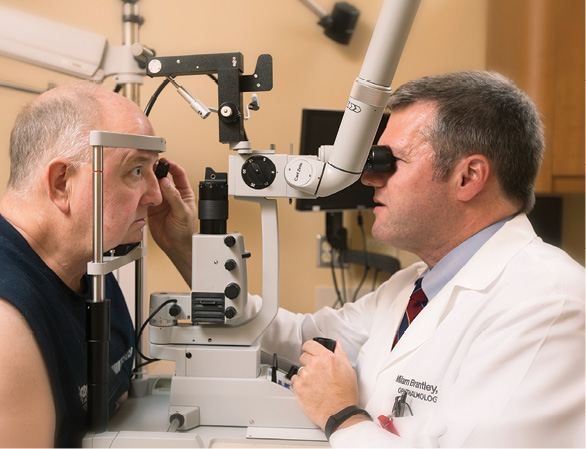
Nationwide, three diseases of the eye—diabetic retinopathy, age-related macular degeneration and glaucoma—affect nearly 20 million people combined.
Now, using a novel technique called metabolomics, which provides a snapshot of thousands of molecules called metabolites in a person’s blood, Dr. Milam Brantley Jr. and colleagues are conducting studies to identify metabolites that can serve as biomarkers for determining a person’s risk of developing any of the three leading causes of blindness.
Brantley—associate professor of ophthalmology, visual sciences, molecular physiology and biophysics—is director of the Vanderbilt Eye Institute’s Initiative for Personalized Medicine in Ophthalmology. Last year he received a $1.7 million grant from the National Eye Institute to investigate metabolic and genetic profiles in age-related macular degeneration. Brantley and his team recently recruited their 1,000th study participant and are recruiting additional VEI patients for their studies.
Participants undergo a blood draw and answer basic health-related questions. The metabolomic analysis of the samples is performed at Emory University in collaboration with metabolomics expert Dean Jones, who currently directs the Emory Clinical Biomarkers Laboratory. The data is combined with genetic information to create a “metabologenetic” profile for a group of patients.
“If we can determine who is most likely to develop sight-threatening diseases, then we have a better chance of intervening early and preventing vision loss,” says Brantley. “The long-term goal of our research is to develop individualized treatment plans for patients with eye diseases.”
The analysis has detected a group of four metabolites that appears to be associated with diabetic retinopathy in patients with diabetes. Brantley hopes this discovery will help him pinpoint markers for the development and progression of all blinding eye diseases.
“We envision a time when a routine blood draw could help predict a patient’s course of disease and response to treatment based on his or her unique genetic and metabolic profiles,” he says. “This could lead to timely detection of advanced disease and earlier identification of effective treatment, optimizing visual outcomes.”